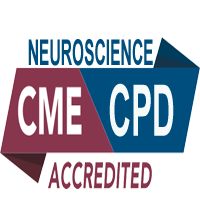
Alok Sharma
Neuro Gen Brain & Spine Institute, India
Title: Understanding Neurobiology of Autism through Neuroimaging
Biography
Biography: Alok Sharma
Abstract
Neuropathology of autism involves poor interaction and connectivity between different brain areas during development leading to functional abnormalities. Hence, functional neuroimaging plays a significant role. Neuroimaging techniques such as 18F-FDG Positron emission tomography (PET CT) aid in identifying brain pathology. Various neuroimaging studies have suggested hypometabolism in temporal lobes, cerebellum, mesial temporal structures, hippocampus, amygdala and increased blood perfusion in prefrontal lobes. These findings make PET-CT a promising option to understand and monitor the neurobiology of autism after an intervention.
In previous studies correlation of the metabolism with severity of autism was lacking. This study included 94 cases of autism, 50 moderate and 44 mild, between the ages of 2-16 years. Severity was based on Indian scale for assessment of autism (ISAA) score. The areas of abnormal metabolism were calculated using normal distribution curve.The brain metabolism in the 2 groups was compared.Additionally PET-CT scans of 4 cases of autism treated with autologous bone marrow mononuclear cell (BMMNCs) intrathecal transplantation were analyzed.
It was observed that both mild and moderate autism children exhibited hypo metabolism in the brain areas similar to earlier studies. However, hyper metabolism was observed in the regions in Calcarine fissure, Heschl’sgyrus, inferior parietal, middle frontal gyrus and inferior frontal gyrus. The brain metabolism was significantly lesser in children with moderate autism varying across age groups. All four children treated with BMMNCs intrathecal transplantation showed changes in both hyper and hypo metabolism post transplantation. There was a significant improvement clinically and in the CARS or ISAA scores correlating with PET CT. The balancing effect seen in the PET-CT may be due to the improved connectivity regulating the brain metabolism.
These findings may be useful in identifying the impaired regions and understanding the severity of the damage to differentiate between mild and moderate autism. It may further help in assessing the outcome of a treatment modality like cellular therapy which may alter the disease pathology at a cellular level.

